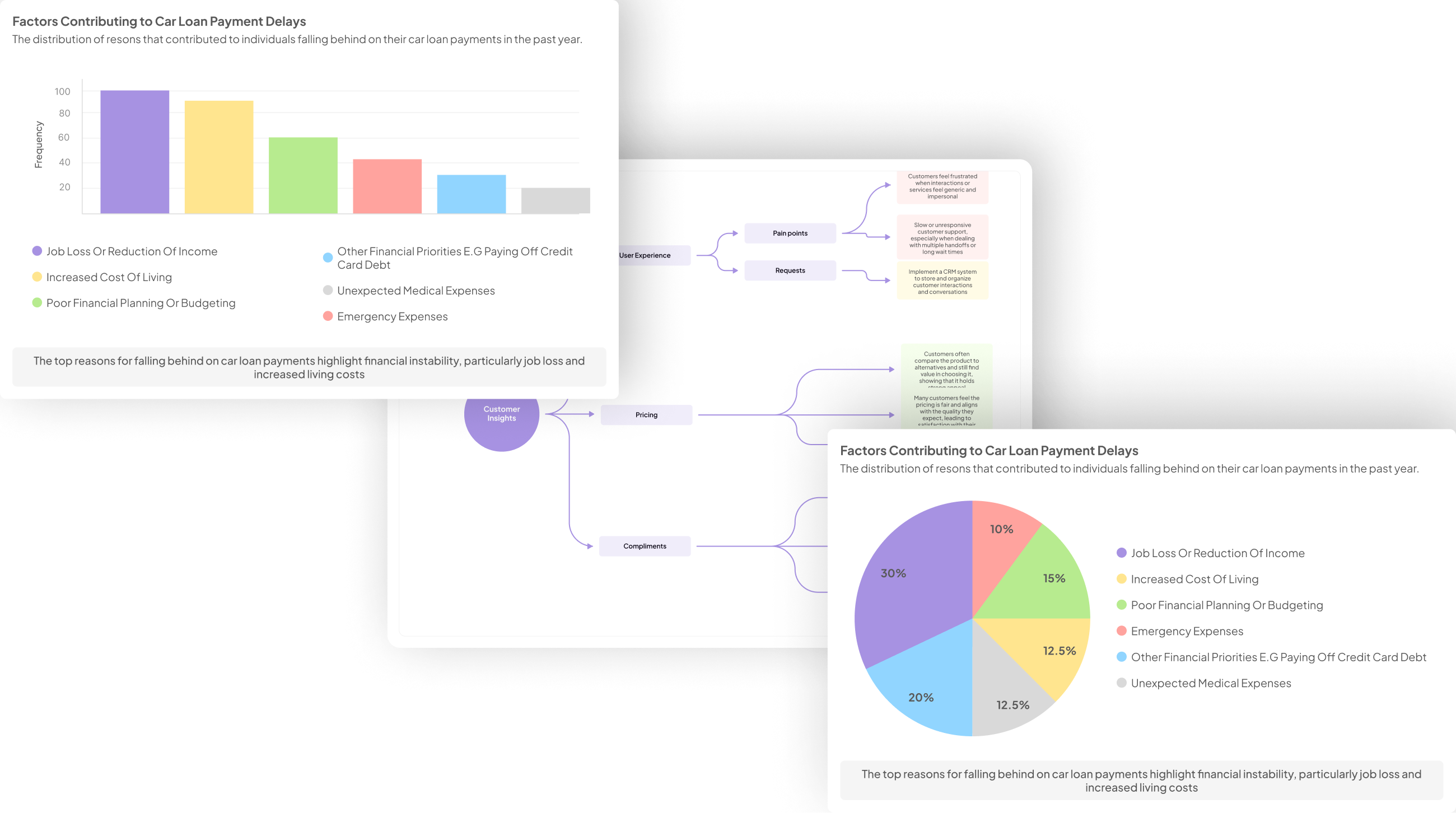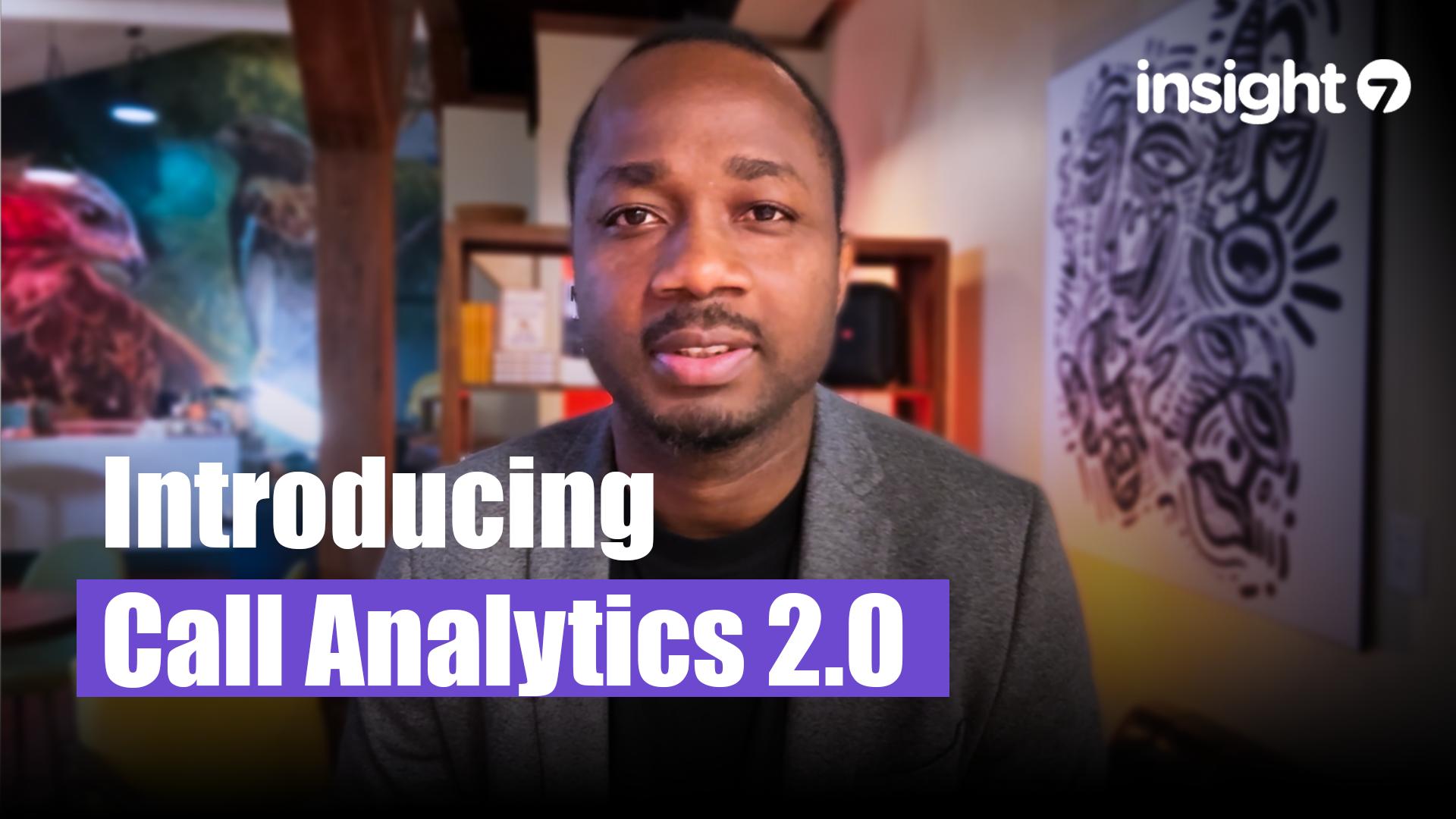How to generate themes from meeting recordings
-
Bella Williams
- 10 min read
In the dynamic realm of business meetings, the extraction of meaningful themes from recordings can be a transformative task. Theme extraction techniques allow teams to streamline their insights by identifying key patterns within discussions, ultimately enhancing decision-making and collaboration. Meeting recordings are often rich with valuable information, yet synthesizing this data can seem overwhelming. Understanding how to effectively capture and analyze these themes can significantly improve outcomes.
To achieve this, familiarity with various methods is essential. Initial steps often involve transcribing audio to textual formats, making it easier to discern key ideas. Following transcription, utilizing technology to sift through the data can reveal vital themes that inform strategic initiatives. Embracing robust theme extraction techniques simplifies the process of navigating through complex discussions, empowering teams to focus on what truly matters.
Generate visualizations from your qualitative data. At Scale.

Understanding Theme Extraction Techniques
Theme extraction techniques involve systematic approaches to distilling information from meeting recordings. Understanding these techniques is crucial for effectively identifying themes that emerge during discussions. The first step involves transcribing the meeting audio into text. Once transcriptions are available, the next step is analyzing the text to uncover recurring themes, ideas, or sentiments expressed by participants.
To effectively extract themes, consider the following methods:
- Keyword Analysis: Focus on frequently mentioned words or phrases to uncover core topics.
- Sentiment Analysis: Assess the emotional tone of conversations to gauge participant attitudes.
- Thematic Coding: Categorize segments of text into themes based on predefined criteria, enhancing the clarity of key points.
- Collaborative Review: Involve multiple team members in theme analysis to bring diverse perspectives and ensure accuracy.
These techniques offer a structured approach to extracting meaningful insights from meetings, ultimately fostering more effective communication and decision-making.
The Importance of Identifying Key Themes
Identifying key themes is crucial for synthesizing information from meeting recordings. Effective theme extraction techniques allow you to distill conversations into actionable insights. By pinpointing the main ideas, you facilitate data analysis, which enhances decision-making and strategy development within teams. Recognizing patterns in discussions can aid in understanding stakeholder concerns and aligning projects with organizational goals.
Moreover, focusing on key themes streamlines communication and fosters collaboration. When everyone understands the primary issues at hand, it becomes easier to prioritize actions and allocate resources effectively. By consistently analyzing the most salient points, organizations can create targeted reports that highlight significant trends or challenges. This approach not only saves time but also ensures that vital insights are not overlooked. In essence, identifying key themes turns raw meeting data into a valuable asset for informed decision-making.
Common Challenges in Theme Extraction from Audio
Theme extraction from audio recordings, such as meeting discussions, undeniably presents various challenges. One primary challenge is the quality of the audio itself. Background noise, overlapping conversations, and varying speaker volumes can significantly impact transcriptions. As a result, extracting accurate themes becomes complicated. Additionally, the subject matter can entail complex jargon that may not translate well in automated transcription.
Another major hurdle involves distinguishing between critical and trivial information. During meetings, participants might share numerous ideas, and sifting through these details can overwhelm the analysis process. The use of inconsistent terminologies or references adds to the confusion, making it essential to have a clear framework for theme extraction.
Technology can assist in overcoming these obstacles, but combining human insight with automated methods often yields the best results. Ultimately, being aware of these challenges enhances the efforts towards effective theme extraction techniques in audio data analysis.
Evaluate Performance on Customer Calls for Quality Assurance.
Practical Theme Extraction Techniques: A Step-by-Step Guide
To effectively extract themes from meeting recordings, practical theme extraction techniques guide you through a systematic approach. First, transcribing meeting recordings is essential because it converts spoken language into text. This transforms casual discussions into analyzable content, making it easier to identify recurring topics and sentiments. Accurately transcribing can also streamline the overall theme extraction process, reducing the complexity of audio analysis.
Next, analyzing the transcripts allows you to dig deeper into the content. Look for keywords or phrases that appear frequently, signaling core topics discussed. This analysis does not need to be manual; many tools now assist in aggregating common themes, making the task more manageable. Using technology enhances efficiency, as these tools can identify patterns and group relevant discussions. By employing these practical theme extraction techniques, you gain clarity on meeting discussions, leading to enhanced decision-making and improved outcomes.
Step 1: Transcribing Meeting Recordings
Transcribing meeting recordings is a crucial step in the theme extraction process. The accurate written records serve as a foundation for generating insights. To begin, it’s essential to listen carefully to the discussions and convert these audio files into text. This transcription allows participants to reflect more deeply on the content shared during meetings and supports a clearer analysis of themes.
Transcription can be done manually or through automated tools designed for bulk processing. Utilizing technology can help streamline this task significantly, especially when handling multiple recordings at once. Once the recordings are transcribed, they can be organized systematically, making it easier to identify recurring themes or unique insights. These themes will ultimately guide deeper analysis, helping to uncover valuable trends and considerations that can enhance future meetings. By establishing a robust transcription process, you lay the groundwork for successful theme extraction techniques.
Step 2: Analyzing Transcripts for Key Themes
Analyzing transcripts for key themes is a critical step in identifying insights from meeting recordings. As you review the transcript, aim to pinpoint recurring ideas, emotions, and topics. These themes can offer valuable perspectives on team dynamics and project progress. A clear understanding of key themes will drive actionable outcomes and improve future meetings.
To systematically extract these themes, consider the following techniques:
- Read Carefully: Start by reading through the entire transcript to grasp the overall context.
- Highlight Keywords: Identify and highlight keywords or phrases that appear frequently.
- Group Similar Ideas: Organize highlighted entries into categories that reflect common themes.
- Summarize Findings: Create summaries for each theme that encapsulate the main points discussed.
- Visualize Data: Use charts or graphs to depict frequency and relationships among the key themes.
By employing these techniques, you can effectively transform raw meeting data into insightful themes that enhance decision-making and communication.
Step 3: Using Technology to Assist in Theme Identification
Utilizing technology for theme identification can significantly streamline your analysis of meeting recordings. By employing advanced software, you can automate the process of extracting relevant themes and insights from extensive transcripts. Many tools offer capabilities such as audio transcription, keyword extraction, and sentiment analysis, making it easier to pinpoint recurring motifs and significant points of discussion. These features can save time and improve accuracy in identifying key themes that emerge from conversations.
Several impressive theme extraction techniques are available for your use. First, transcription software can convert spoken dialogue into text, allowing for thorough review. Next, sentiment analysis tools can highlight emotional undertones in discussions, providing context for themes. Lastly, keyword extraction algorithms can identify frequently mentioned terms, helping to visualize predominant topics. By integrating these technologies, you make theme identification a more efficient and insightful process, ultimately enhancing your understanding of meeting content and facilitating better decision-making.
Top Tools for Theme Extraction Techniques
To effectively implement theme extraction techniques, utilizing the right tools is essential. The following tools are among the top choices for extracting meaningful themes from meeting recordings. Each tool offers unique capabilities suited to different needs, ensuring efficient handling of audio data while generating actionable insights.
Insight7: Known for its comprehensive features, Insight7 allows easy recording, transcription, and analysis of meeting conversations. Users can create customized evaluations based on templates, making it suitable for quality assurance tasks.
Otter.ai: This tool excels in real-time transcription and collaboration, allowing participants to highlight key moments during the meeting. Its intuitive interface helps streamline the extraction process and fosters engagement among team members.
Sonix: Sonix is particularly effective in converting audio to searchable text. This capability enables users to locate important quotes and themes quickly, enhancing the review process.
Rev.com: Offering both automated and human transcription services, Rev.com accommodates various needs. Its accuracy in transcribing ensures that themes extracted are reliable and relevant.
TranscribeMe: Combining machine learning with human expertise, TranscribeMe provides high-quality transcription services that contribute to effective theme extraction. Its focus on accuracy makes it a popular choice for critical meetings.
By leveraging these tools, teams can enhance their ability to derive actionable themes from meeting recordings, improving decision-making and collaboration.
Insight7
Extracting key themes from meeting recordings can significantly enhance insights derived from those discussions. Understanding theme extraction techniques becomes essential when navigating the abundance of information shared during meetings. The first step involves accurately transcribing the audio to ensure that the nuances of the conversation are captured. Accuracy in transcription lays a solid foundation for the subsequent analysis.
After transcription, analyzing the text is crucial for identifying recurring themes. This requires a careful review to discern patterns, key phrases, and sentiments conveyed in the discussions. Technology plays a vital role in this process by providing tools that can assist in identifying and organizing themes efficiently. Employing automated solutions not only speeds up the analysis but also helps maintain consistency, making it easier to produce actionable insights. By effectively harnessing theme extraction techniques, organizations can transform meeting recordings into valuable strategic resources.
Otter.ai
In the process of generating themes from meeting recordings, an efficient transcription tool plays a crucial role. By converting spoken language into text, the tool significantly eases the task of theme extraction. For instance, after transcribing a meeting, users can examine the content to identify key discussion points, ideas, and recurring topics that emerge from the dialogue. This aids in synthesizing insights that can drive decision-making.
Moreover, technology facilitates a deeper analysis of the transcriptions. Many tools offer features such as keyword search and sentiment analysis, making it easier to highlight critical themes within large volumes of data. Implementing these theme extraction techniques not only streamlines the analysis process but also promotes collaboration and understanding among team members. By effectively transforming audio into actionable insights, organizations can foster a culture of continuous improvement and responsiveness, ensuring that important conversations lead to meaningful outcomes.
Sonix
Sonix provides an efficient platform for transcribing audio recordings, making it easier to identify and extract themes. By converting spoken content into written form, users can analyze meetings and discussions in depth. This transcription process is critical for understanding the underlying themes in a conversation, as it allows teams to review and reflect on key points that may have been overlooked in real-time.
Utilizing advanced algorithms for accuracy, the platform aids in quickly generating text from audio recordings. Once transcriptions are complete, users can begin analyzing them for recurring topics and insights. This systematic approach enhances collaboration among team members, fostering a productive environment for decision-making. Moreover, it addresses common challenges in theme extraction, such as time consumption and scattered information. By employing Sonix, organizations can ensure that vital discussions are translated into actionable themes, ultimately fostering better communication and informed strategies.
Rev.com
When it comes to effective theme extraction techniques, using reliable transcription services can significantly streamline the process. Transcribing meeting recordings helps convert spoken words into written text, making it easier to analyze content for key themes. This foundational step ensures that all discussions are documented accurately, allowing for more thorough analysis later on.
Once the recordings are transcribed, analyzing the transcripts for recurring topics becomes crucial. This is where skilled software tools can assist in identifying important themes across various recordings. Advanced algorithms can highlight commonly mentioned concepts, enabling teams to focus on critical insights that drive decision-making. By utilizing this approach, organizations can efficiently uncover valuable themes from discussions, leading to improved outcomes and more targeted future meetings.
TranscribeMe
Transcribing audio recordings is the essential first step in theme extraction techniques. By accurately converting spoken conversations into text, valuable insights become accessible. This process makes it easier to identify recurring themes, pain points, and actionable items from meeting discussions. Once recordings are transcribed, users can easily navigate through the text to highlight key statements and sentiments expressed during the calls.
Following transcriptions, analyzing the transcripts opens doors to significant insights. Advanced tools simplify this task by allowing users to categorize data and extract relevant themes effortlessly. As users interact with the transcripts, they can filter information based on specific parameters, making it easier to pinpoint critical trends and insights. This systematic approach to organizing and interpreting meeting content ultimately enhances decision-making and promotes collaborative growth.
Conclusion: Mastering Theme Extraction Techniques for Better Meetings
Mastering theme extraction techniques is crucial for enhancing the quality and effectiveness of meetings. By effectively identifying and organizing key themes from recordings, participants can focus on vital discussions and actionable insights. This process not only improves decision-making but also fosters collaboration among team members.
Implementing practical techniques such as transcribing and analyzing transcripts allows for a deeper understanding of discussions. Additionally, utilizing technology can significantly streamline the theme extraction process. Ultimately, refining these techniques can foster more productive meetings, leading to tangible improvements in project outcomes and team dynamics.







